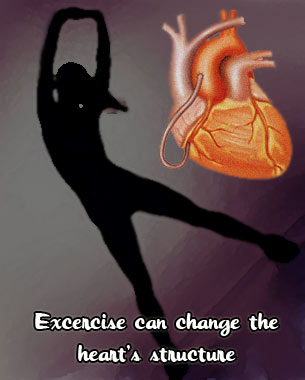
Powerful physical exercises tone up and strengthen the heart as much as it affects muscles. A highly improved study of the characteristics of the heart by modern imaging technology like echocardiography revealed that training the heart well by physical activities like cycling, rowing long distance running etc increases the thickness of the myocardium and the size of the heart’s cavities namely the left ventricle.
The study is useful in sports medicine as it can help athletes who undergo intensive training to identify the adaptation of the heart and the regression to its original state. In order to identify heart diseases that are similar to the natural adaptations of the heart due to training, it is very crucial to decipher the echocardiography correctly, as it aids in comprehending the regression of the heart to its elementary condition.
To study the direct or indirect difference between a healthy and an unhealthy heart, numerous other studies have been conducted on sport athletes.
The study showed that diametrically opposed results were obtained in the echocardiography measurements of regression mainly because of a decrease in physical activity.
The research further concluded that an ill heart can suffer from dilatation or hypertrophy whereas a healthy heart reverses to its initial structure after the stimulus fades out.
